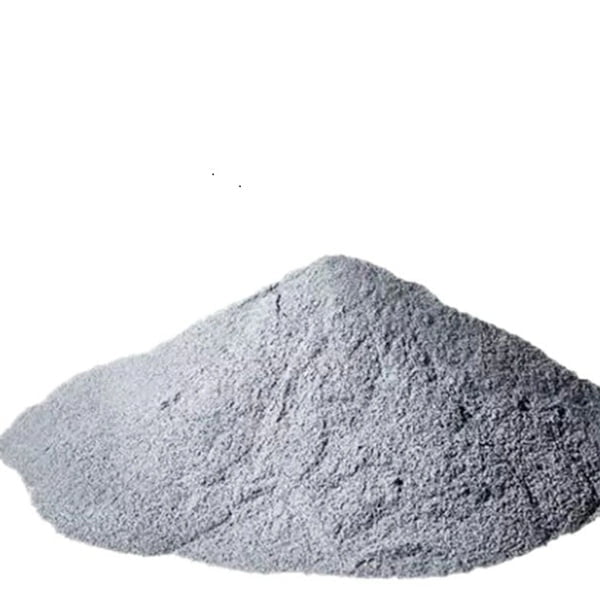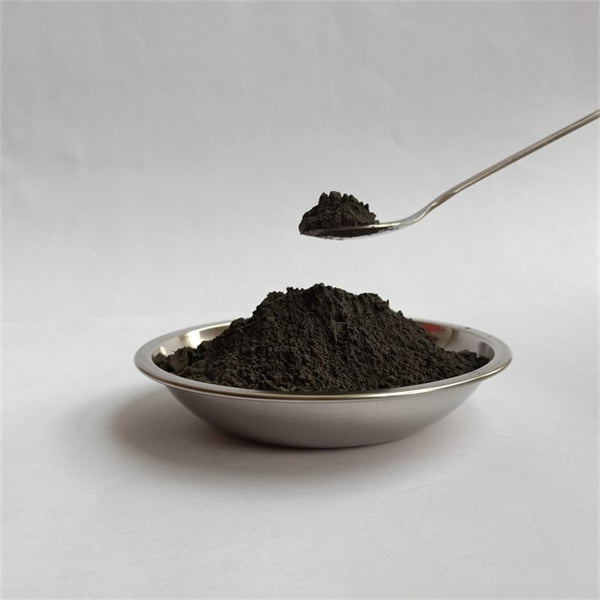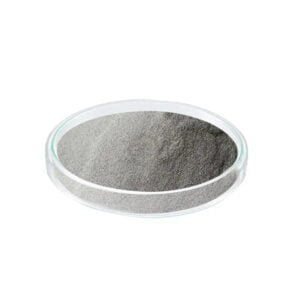wear resistance powder
Table of Contents
Imagine a world where your gears grind to a halt after minimal use, your drill bits turn dull after a single project, and your mining equipment surrenders after a few months on the job. That’s the harsh reality without wear resistance powders. These unsung heroes act as a protective shield, extending the lifespan of critical industrial components and saving businesses significant time and money.
Let’s delve deeper into the world of wear resistance powders, exploring their composition, properties, applications, and the champions in this battlefield – specific metal powder models. Buckle up for an in-depth exploration!

Chemical Composition of Wear Resistance Powders
Wear resistance powders are a diverse group, but they typically fall into two main categories:
- Metallic Powders: These workhorses are composed of various metals known for their exceptional hardness and durability. Think of them as tiny suits of armor for your components. Common examples include:
- Tungsten Carbide (WC): The undisputed king of wear resistance, WC boasts exceptional hardness, exceeding even that of diamond on the Mohs scale. It excels in environments with high friction and abrasion.
- Chromium Carbide (CrC): A close contender to WC, CrC offers outstanding resistance to wear and corrosion. It shines in applications involving high temperatures and oxidation.
- Nickel Chromium (NiCr): This versatile powder combines good wear resistance with excellent corrosion resistance. It’s a popular choice for applications exposed to harsh chemicals and abrasive wear.
- Steel Powders: Offering a balance between affordability and wear resistance, steel powders come in various grades, each tailored for specific applications.
- Ceramic Powders: For high-temperature applications, ceramic powders like alumina (Al2O3) and zirconia (ZrO2) step up to the plate. They boast exceptional thermal stability and wear resistance but might be more brittle compared to metallic options.
Additional elements like cobalt (Co) or boron (B) are often added to metallic powders to enhance binding properties and improve wear resistance under specific conditions.
The Advantages of Wear Resistance Powders
So, why should you consider incorporating wear resistance powders into your industrial processes? Here are some compelling reasons:
- Extended Component Lifespan: By creating a tougher outer layer, wear resistance powders significantly reduce wear and tear on components. This translates to fewer replacements, reduced downtime, and ultimately, significant cost savings. Imagine a scenario where a pump component traditionally needed replacing every quarter. By incorporating wear resistance powder coating, you could extend its lifespan to a year or more. That’s a substantial improvement in terms of both maintenance costs and operational efficiency.
- Enhanced Performance: Wear resistance powders not only protect components but can also improve their overall performance. For instance, a drill bit coated with wear resistance powder will retain its sharpness for longer, resulting in cleaner cuts and faster drilling times.
- Versatility Across Applications: The beauty of wear resistance powders lies in their adaptability. From mining equipment and automotive parts to cutting tools and valves, these powders find application in a vast array of industries.
- Improved Efficiency: By minimizing wear and tear, wear resistance powders contribute to enhanced overall efficiency. Less downtime for replacements translates to more production hours and a smoother workflow.
Disadvantages of Wear Resistance Powders
While wear resistance powders offer undeniable benefits, it’s important to acknowledge some potential drawbacks:
- Cost: Depending on the chosen material and application method, wear resistance powder coatings can be more expensive than traditional techniques. However, the long-term cost savings due to extended component lifespan often outweigh the initial investment.
- Application Expertise: Successful application of wear resistance powders often requires specialized equipment and expertise. Partnering with a reputable coating company ensures optimal results.
- Material Limitations: While wear resistance powders are incredibly tough, they aren’t invincible. Choosing the right powder for the specific application and wear mechanism is crucial. For instance, a ceramic powder might be a great choice for high-temperature environments but might not fare well under heavy impact loads.
Metal Powder Models for Wear Resistance: A Lineup of Champions
Now, let’s meet some of the leading metal powder models dominating the wear resistance battlefield:
1. Tungsten Carbide (WC): As mentioned earlier, WC reigns supreme in terms of hardness. It’s particularly effective against abrasive wear and is commonly used in:
- Cutting tools: Drill bits, milling inserts, and end mills benefit significantly from WC’s exceptional wear resistance.
- Mining and construction equipment: Crushers, grinding equipment, and wear plates all leverage WC’s ability to withstand harsh environments.
- Oil and gas drilling: Downhole tools and components exposed to extreme pressure and abrasive conditions rely on WC’s strength.
2. Chromium Carbide (CrC): A worthy competitor to WC, CrC offers exceptional resistance to wear and corrosion. It shines in applications involving:
- High-temperature environments: CrC maintains its strength and wear resistance even at elevated temperatures, making it ideal for applications like hot stamping dies and heat exchangers.
- Oxidation resistance: CrC forms a stable oxide layer that protects against oxidation and degradation at high temperatures. This makes it a popular choice for components in furnaces and exhaust systems.
- Food processing equipment: CrC’s non-toxic nature and excellent wear resistance make it suitable for use in food processing equipment like screws and augers.
3. Nickel Chromium (NiCr): This versatile powder combines good wear resistance with excellent corrosion resistance. It’s a popular choice for applications exposed to:
- Harsh chemicals: NiCr’s resistance to a variety of chemicals, including acids and alkalis, makes it suitable for use in pumps, valves, and pipes handling corrosive fluids.
- Abrasive wear: While not quite as hard as WC or CrC, NiCr offers a good balance between wear resistance and affordability. It finds application in components like gears, sprockets, and sliding wear plates.
- High humidity environments: NiCr’s corrosion resistance makes it a valuable asset in applications exposed to moisture and humidity, such as marine equipment and wastewater treatment plants.
4. Steel Powders: As mentioned earlier, steel powders come in various grades, each tailored for specific wear resistance needs. Here’s a breakdown of some popular options:
- Low-alloy steel powders: These offer a cost-effective solution for moderate wear applications like gears, bearings, and cams.
- Medium-alloy steel powders: These provide a step up in wear resistance compared to low-alloy options and are suitable for applications like crusher jaws and wear liners.
- High-alloy steel powders: These offer the highest wear resistance among steel powders and are used in demanding applications like grinding media and shredder blades.
5. Nickel-based superalloy powders: For the ultimate in wear resistance at high temperatures, nickel-based superalloy powders enter the arena. These exotic powders are particularly suited for:
- Aerospace components: Gas turbine engine parts and landing gear experience extreme wear and heat, making nickel-based superalloy powders a perfect choice.
- Chemical processing equipment: Components handling highly corrosive chemicals at elevated temperatures benefit from the exceptional properties of these powders.
6. Stellite Powders: Another group of high-performance cobalt-chromium based alloys, Stellite powders offer exceptional wear and corrosion resistance. They are particularly useful for:
- Valve components: Stellite powders excel in applications like valve seats and balls, where resistance to wear, corrosion, and high temperatures is crucial.
- Wear pads and inserts: Components like wear pads in feeder mechanisms and chutes leverage Stellite powders’ ability to withstand abrasion and impact.
7. Molybdenum Powders: While not as common as some other options, molybdenum powders offer excellent properties for specific applications:
- High-temperature and high-pressure environments: Molybdenum’s high melting point and good wear resistance make it suitable for components in furnaces, molds, and dies.
- Electrical applications: Molybdenum’s good electrical conductivity can be beneficial in applications like electrical contacts and electrodes.
8. Boron Carbide Powders: For a unique combination of wear resistance and low density, boron carbide powders come into play. They are particularly useful for:
- Lightweight applications: Aerospace components and other weight-sensitive applications can benefit from boron carbide’s ability to provide wear resistance without adding excessive weight.
- High-speed applications: Boron carbide’s low friction coefficient makes it a good choice for components like bearings and bushings operating at high speeds.
9. Silicon Carbide (SiC) Powders: Another ceramic option, SiC offers excellent wear resistance and high-temperature capabilities. It finds application in:
- Cutting tools: SiC can be used in certain cutting tools for applications involving high temperatures and abrasive materials.
- Wear liners and chutes: SiC’s ability to withstand abrasion makes it suitable for lining chutes and hoppers in various industries.
10. Titanium Carbide (TiC) Powders: Rounding out our lineup, TiC powders offer a good balance between wear resistance, high-temperature performance, and corrosion resistance. They are used in:
- Cutting tools: TiC can be used in certain cutting tools for applications involving high temperatures and moderate to high abrasive wear.
- Chemical processing equipment: Components handling corrosive chemicals at elevated temperatures can benefit from TiC’s properties.
Applications, Specifications, and Beyond
Having explored the champion metal powders, let’s delve deeper into the practicalities of wear resistance powders. We’ll uncover their applications across various industries, along with specifications, comparisons, and some frequently asked questions.
The versatility of wear resistance powders is truly impressive. Here’s a glimpse into some of the key industries that leverage their benefits:
- Mining and Construction: Crushers, grinding equipment, wear plates, drill bits – all these components see significant wear and tear. Wear resistance powders significantly extend their lifespan, reducing downtime and maintenance costs in these demanding environments.
- Oil and Gas: Downhole tools, drilling components, and pipelines face extreme pressure, abrasion, and corrosion. Wear resistance powders create a protective barrier, ensuring smoother operations and enhanced equipment longevity.
- Manufacturing: From cutting tools and dies to gears, sprockets, and molds, wear resistance powders play a crucial role in various manufacturing processes. They improve tool life, reduce production downtime, and enhance overall efficiency.
- Power Generation: Components in power plants, like valves, pumps, and turbine blades, are exposed to high temperatures, wear, and corrosion. Wear resistance powders offer a robust defense, ensuring reliable power generation.
- Food Processing: Wear resistance powders, particularly those with non-toxic properties like chromium carbide, can be used in food processing equipment like screws, augers, and mixing blades. This safeguards food quality and hygiene while ensuring equipment longevity.
Beyond these core industries, wear resistance powders find application in various other sectors, including:
- Aerospace
- Chemical Processing
- Textile Manufacturing
- Paper Production
- Wastewater Treatment
Specifications and Considerations: Choosing the Right Powder
Selecting the most suitable wear resistance powder requires careful consideration of several factors:
- Substrate material: The material of the component being coated plays a crucial role. For instance, a powder with excellent adhesion properties for steel might not be ideal for aluminum.
- Wear mechanism: Understanding the primary wear mechanism – abrasion, impact, erosion, or a combination – is essential. Different powders offer varying degrees of resistance to specific wear mechanisms.
- Operating environment: Temperature, pressure, and exposure to chemicals all influence powder selection. For instance, a high-temperature environment might necessitate a powder with exceptional thermal stability.
Here’s a table summarizing some key specifications to consider when choosing wear resistance powder:
| Specification | Description | Example |
|---|---|---|
| Powder Material | The type of metal or ceramic used in the powder | Tungsten Carbide (WC), Chromium Carbide (CrC), Nickel Chromium (NiCr) |
| Particle Size | The size of individual powder particles | 5 microns, 10 microns, 50 microns |
| Particle Size Distribution | The range of particle sizes within the powder | Narrow distribution for a uniform coating, wider distribution for specific applications |
| Flowability | The ease with which the powder flows | Crucial for even application during coating processes |
| Hardness | The powder’s resistance to indentation | Measured on the Vickers or Rockwell scale |
| Melting Point | The temperature at which the powder melts | Important for high-temperature applications |
Material Safety Data Sheets (MSDS): Always consult the MSDS for the specific wear resistance powder you’re considering. This document provides vital information regarding safety precautions, handling procedures, and potential hazards.
Comparing Apples to Oranges: A Look at Pros and Cons
When evaluating different wear resistance powder options, it’s helpful to compare their advantages and limitations:
| Powder | Pros | Cons |
|---|---|---|
| Tungsten Carbide (WC) | Exceptional hardness, excellent abrasion resistance | High cost, relatively brittle |
| Chromium Carbide (CrC) | Good wear resistance, high-temperature performance, corrosion resistance | Not quite as hard as WC |
| Nickel Chromium (NiCr) | Good balance of wear and corrosion resistance, cost-effective | Lower hardness compared to WC and CrC |
| Steel Powders | Affordable, good for moderate wear applications | Lower wear resistance compared to carbide or ceramic options |

FAQs
What are wear resistance powders?
Wear resistance powders are not a common product you’d find commercially. They are typically industrial materials used in coatings or manufacturing processes to improve the durability and lifespan of a material or component. These powders are often very hard and can be formulated from ceramics, metals or even composites.
What are some applications of wear resistance powders?
- Sandblasting media: Some blasting abrasives are formulated from powdered materials like aluminum oxide or silicon carbide for cleaning or texturing surfaces.
- Thermal spray coatings: These coatings are applied by melting wear resistant powders and spraying them onto a surface. They can be used to protect against corrosion, erosion, and wear.
- Additive manufacturing: Powders are used in 3D printing processes to create wear resistant parts.
What are the benefits of using wear resistance powders?
- Increased durability and lifespan of components
- Improved resistance to abrasion, corrosion, and erosion
- Can be used to protect a wide variety of materials
Are there any drawbacks to using wear resistance powders?
- Can be expensive
- Some powders may be difficult to work with
- May not be suitable for all applications
What are some of the common types of wear resistance powders?
- Tungsten carbide
- Chromium carbide
- Aluminum oxide
- Silicon carbide
- Ceramic oxides (e.g., zirconia, titania)
Share On
MET3DP Technology Co., LTD is a leading provider of additive manufacturing solutions headquartered in Qingdao, China. Our company specializes in 3D printing equipment and high-performance metal powders for industrial applications.
Inquiry to get best price and customized Solution for your business!
Related Articles
About Met3DP
Recent Update
Our Product
CONTACT US
Any questions? Send us message now! We’ll serve your request with a whole team after receiving your message.

Metal Powders for 3D Printing and Additive Manufacturing
COMPANY
PRODUCT
cONTACT INFO
- Qingdao City, Shandong, China
- [email protected]
- [email protected]
- +86 19116340731


















